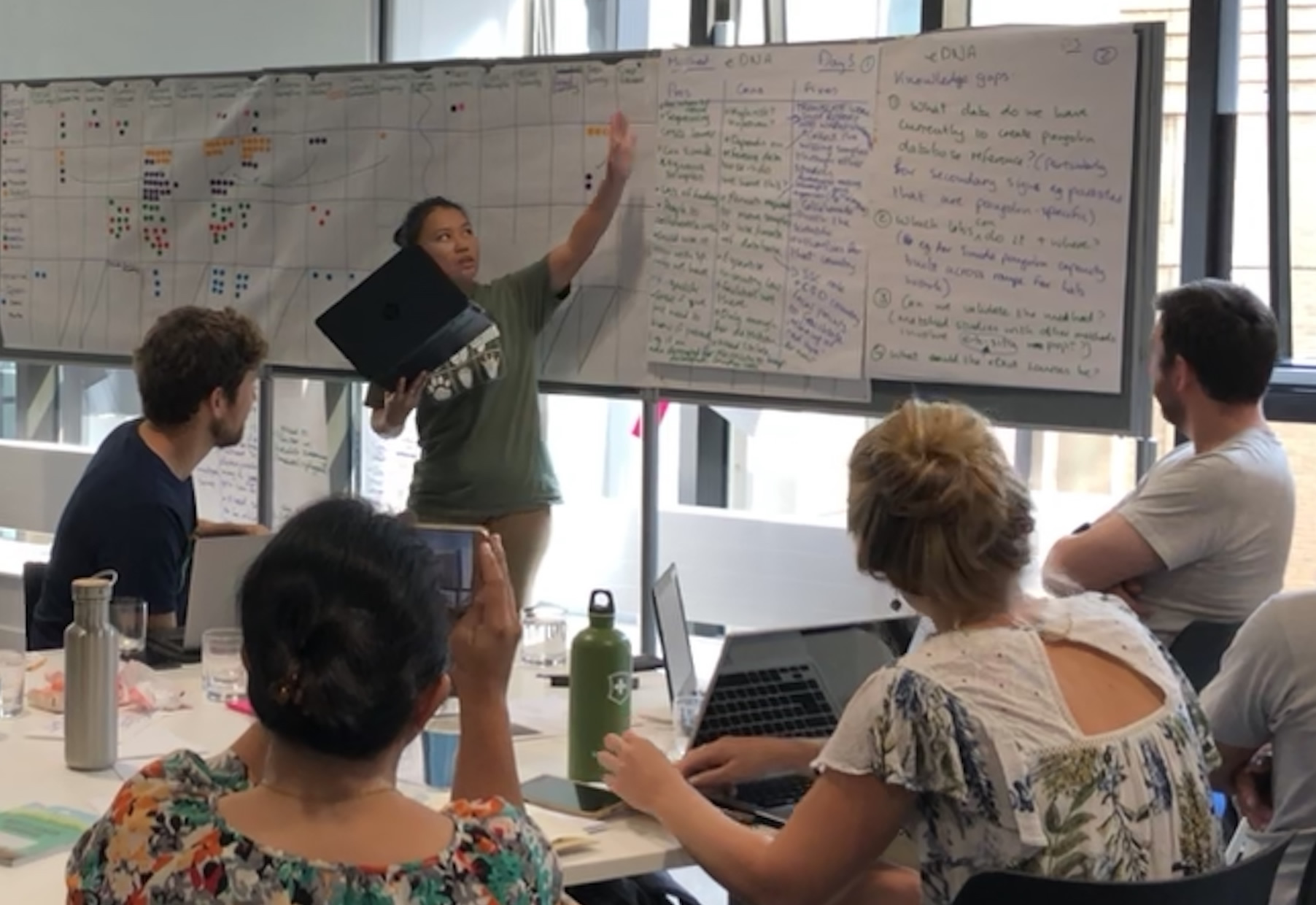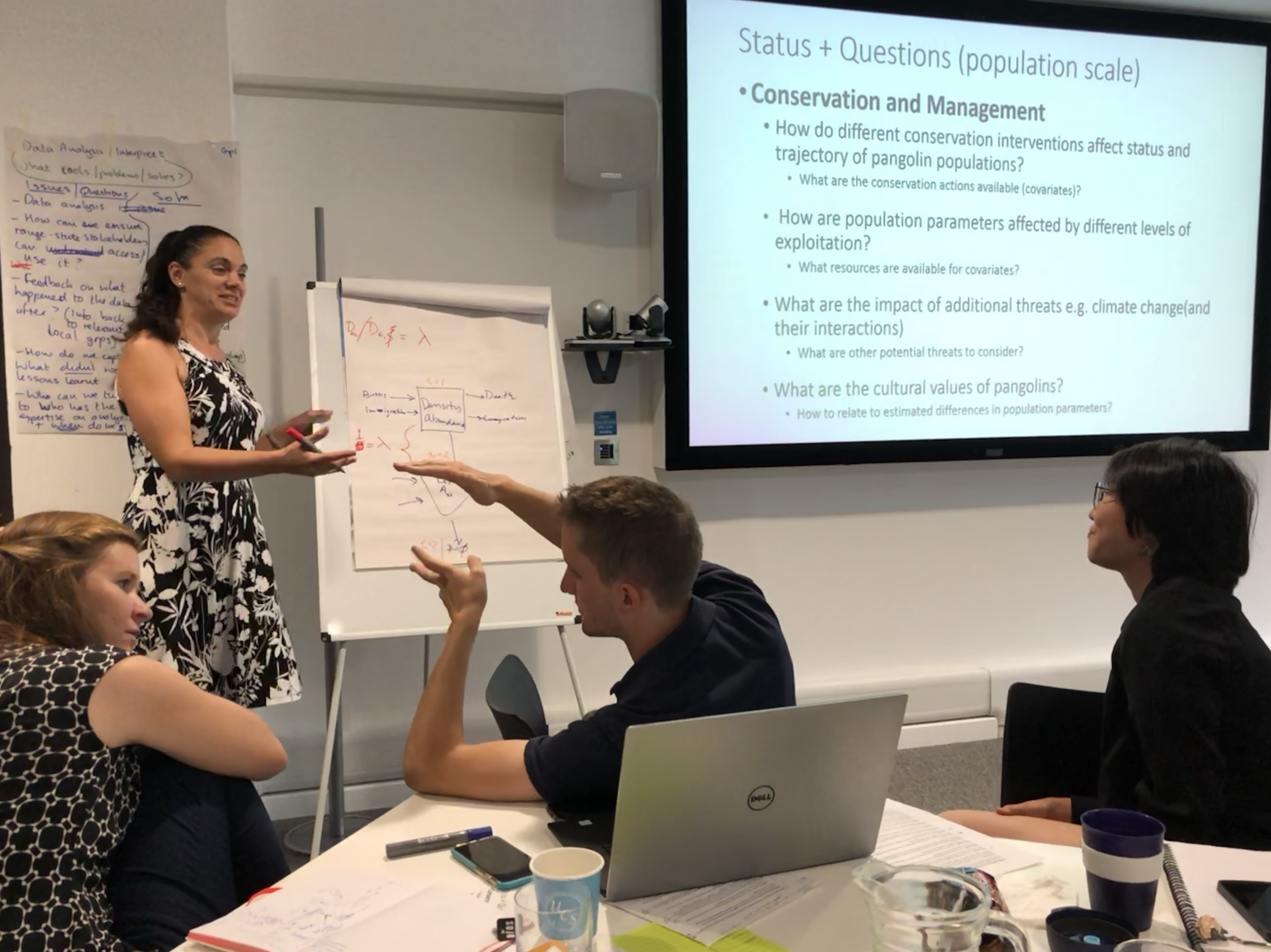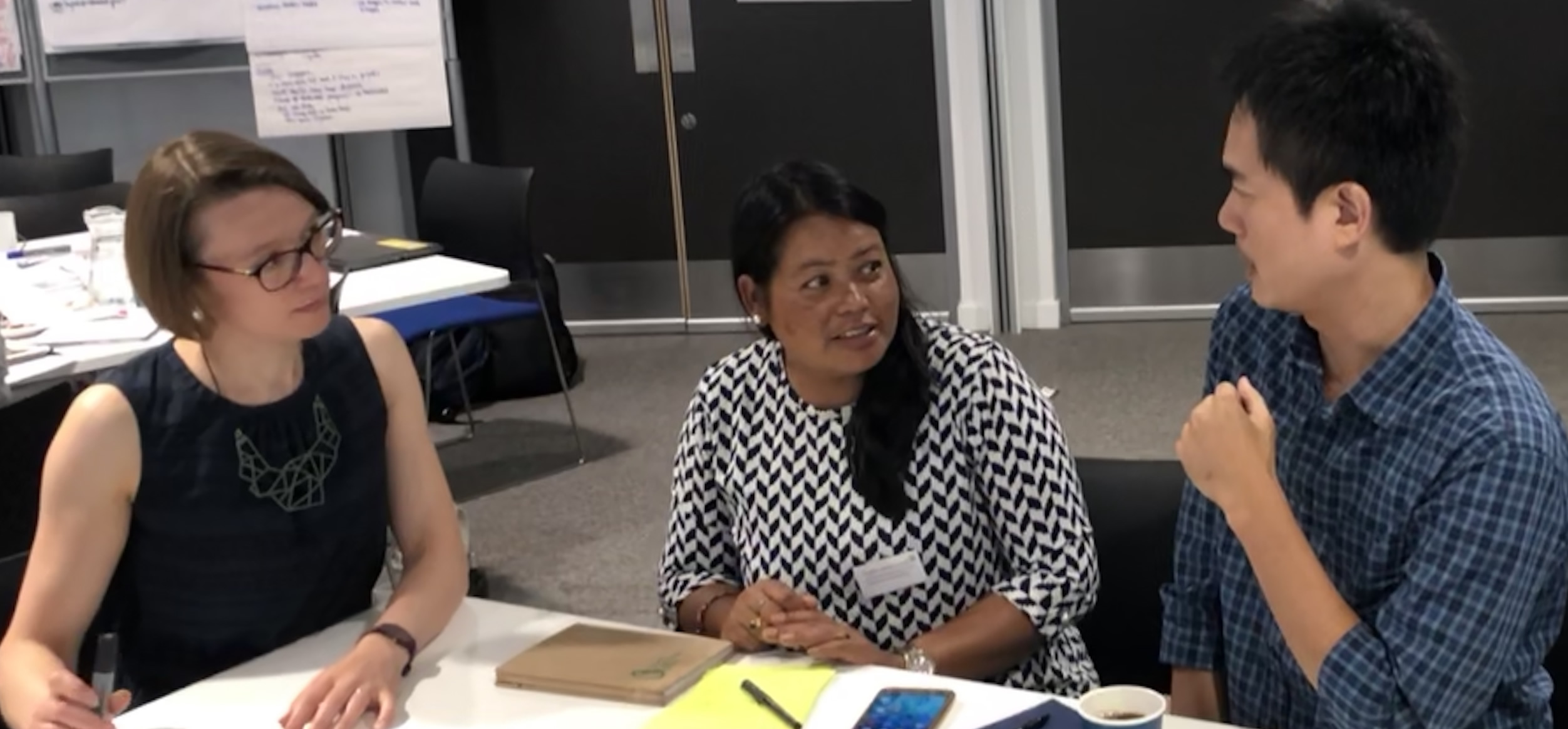IUCN SSC Pangolin Specialist Group members and other experts gathered in Cambridge last week to share information and develop ecological monitoring methods for pangolins – Keri Parker, Communications Co-Vice Chair for the IUCN SSC Pangolin Specialist Group blogs.

IUCN SSC Pangolin Specialist Group members and other experts gathered in Cambridge last week to share information and develop ecological monitoring methods to strengthen conservation efforts for pangolins, the world’s most trafficked mammals. It is believed that one million pangolins have been illegally traded over the last decade, but the conservation community does not have accurate estimates of how many remain in the wild. This lack of information makes it difficult to develop effective conservation strategies.
During the three-day workshop, experts sought to help field researchers build capacity to develop more consistent and effective strategic monitoring programmes in pangolin habitats in Africa and Asia. Improved conservation monitoring strategies will support governments, donors, and wildlife conservation initiatives in their efforts to protect and recover pangolin populations.
“Pangolins are understudied species, and we are only just beginning to understand them,” said Dr. Dan Challender, Chair of the IUCN SSC Pangolin Specialist Group. “Efforts to develop targeted pangolin monitoring programs are in their infancy, and we don’t have any time to lose. This workshop allowed experts to share scarce information, and identify best-practise techniques for detecting and monitoring pangolins in order to develop estimates of how many pangolins might remain in the wild, and consider how to improve conservation programmes going forward.”
The workshop was funded with a grant from the U.S. Fish and Wildlife Service and held at The David Attenborough Building in Cambridge, United Kingdom, home of the Cambridge Conservation Initiative. IUCN SSC’s Conservation Planning Specialist Group provided specialised meeting facilitation through structured exercises specifically designed to help the participants brainstorm novel, shared insights and form strong, ongoing working relationships. During the meeting, experts in population ecology, statistical modelling, and wildlife research worked with a group of field researchers from pangolin range states in Africa and Asia to share expertise. The group discussed the relative benefits of various detection and monitoring methods for elusive and rare species, focusing on their potential applications to pangolin conservation.

Elisa Panjang of the Sabah Wildlife Department shares her knowledge of Sunda pangolin ecology with workshop attendees. (Photo credit – Keri Parker, Save Pangolins)
Dexter Alvarado travelled to the workshop in Cambridge from the Philippines, where he works with the Katala Foundation on the island of Palawan to conserve the endemic and Endangered Philippine pangolin. The workshop gave Alvarado and other attendees the opportunity to connect in person with pioneers and leaders of novel wildlife detection methods and emerging technologies. Experts included Alasdair Davies from The Shuttleworth Foundation, who works to develop open source conservation technologies, and Jennifer Hartman and HJ Kim from the University of Washington’s Conservation Canines initiative, among others. “The Philippine pangolin occurs nowhere else in the world, and we are developing a strong conservation program to protect the species,” said Alvarado. “I’m here to seek new ideas and to learn how we can better apply radio telemetry, camera trapping, community engagement projects, and other methods to create a systematic, scientific and practical strategy to better detect and monitor Philippine pangolins.”
Dr. Dana Morin from the Cooperative Wildlife Research Laboratory at Southern Illinois University and Dr. Alison Johnston from the University of Cambridge provided guidance and training in population ecology and statistical methods that can support the development of efficient, targeted field research studies that can inform critical conservation decisions. “Frequently there are disconnects between the development and availability of statistical methods, questions relevant to direct conservation actions, and feasibility of implementation in the field for a given species or region,” said Morin. “This workshop provided a unique opportunity to specifically address questions pertinent to the success of pangolin programs, drawing from the expertise in the room to match successful field methods and study designs to questions and analyses that will inform conservation decisions, making efficient use of valuable resources.”

Dr. Dana Morin (Cooperative Wildlife Research Laboratory at Southern Illinois University ) discusses monitoring strategies to inform conservation decision making with workshop attendees. (Photo credit – Keri Parker, Save Pangolins)

Dr. Alison Johnston (University of Cambridge), Tulshi Laxmi Suwal (Small Mammal Conservation and Research Foundation – Nepal), and Dr. Nick Ching Min Sun (National Pingtung University – Taiwan) discuss statistical analysis methods and their application to pangolin conservation strategies. (Photo Credit – Keri Parker, Save Pangolins)
Ichu Godwill, graduate of the Mentor Progress on Pangolins fellowship program, took time away from his work conserving the pangolins of Cameroon to seek new insights and best practices to support the emerging Central African pangolin conservation network. “We encounter many challenges in our work when assessing pangolin populations across protected areas in Cameroon,” said Godwill. “This workshop has brought together pangolin experts from around the world to enable us to develop more reliable monitoring methods. I’m looking forward to sharing the methods discussed during this workshop with my colleagues in Central Africa.”

Barbara Pollini from the UN Environment Program and Ichu Godwill from the Central African Pangolin Conservation Network brainstorm pangolin conservation strategies with workshop attendees. (Photo credit – Keri Parker, Save Pangolins)
Workshop participants are now returning to their home countries with renewed purpose and energy after this rare opportunity to collaborate in person. “Our network includes over 100 members based across the globe, and we communicate largely through video conferencing and email,” said Challender. “This workshop has proven that face-to-face engagement can quickly lead to inspired, powerful outcomes which will scale up our work to reverse pangolin population declines.”
Recommendations from the workshop will be published online later in 2018 at newpangolin.zslwebsites.wpengine.com.
– Keri Parker, Communications Co-Vice Chair for the IUCN SSC Pangolin Specialist Group

